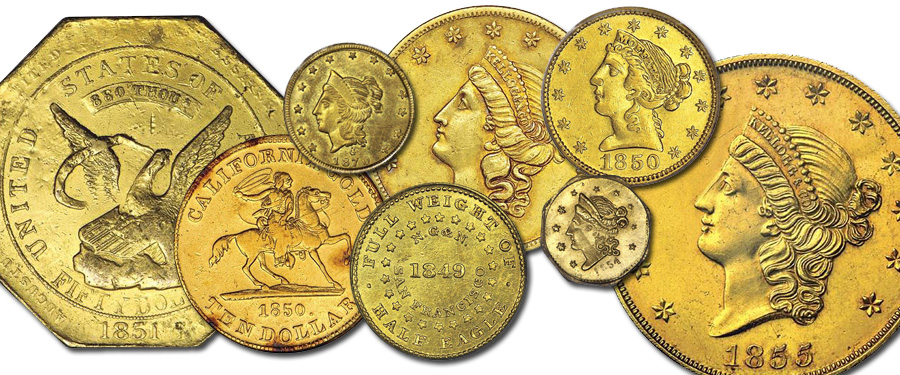
Q: I am new to coin collecting. At a recent coin club meeting in my home town I overheard a collector talking about his “territorial” collection and now I’m curious. Can you shed a little light on “territorial” coins for me?
A: Actually, a case could be made for two types of “territorial” coins in a collection. The first might include the issues struck in the U.S. for the Philippines at the turn of the last century and into the WW II years while it was a U.S. possession. The other “territorial” category — and quite likely the series you overheard the collector talking about — includes the private gold issues that accompanied the Gold Rush in California. Gold was discovered at Sutter’s Mill in 1848, and by 1849 the Gold Rush was in full swing. Gold was plentiful in commerce and was used as a medium of exchange, while coins in general were scarce. Gold dust was usually carried around in small pouches, and items were paid for by the “pinch,” a unit of measure that was simply the amount of gold dust the merchant could “pinch” between his or her thumb and index finger. By 1849 the agitation was on for a more convenient method of exchange, namely coins. There had been private gold issues in Georgia and North Carolina for years beginning in the early 1830s, struck from the gold found in America’s first gold rush, and now California was ripe for coinage as well.
Collectors generally consider the 1849-dated $5 gold half eagles of Norris, Gregg & Norris the first of a long line of California Gold Rush issues. Others soon followed suit, including Moffat & Co, (also in 1849, a year that spawned numerous issues from private firms). Entities with such names as Cincinnati Mining & Trading Co. and Massachusetts and California Co. also struck coins intended for circulation dated 1849. Many of the Gold Rush issues came later in the 1850s and in various denominations from $2.50 up to $50, though the $5, $10, and $20 pieces were the most prevalent. Many other merchants produced tiny gold coins in the 25-cents, 50-cents, and $1 denominations. Hundreds of varieties of these tiny gold pieces are known and are dated 1853 through to the late 1880s, and all are highly collectable today. These Gold Rush issues, large and small, are attractive and interesting; a nearly complete listing of California private gold coinage can be found in the Red Book. It might be worth your while to ask the collector in your club to bring in a portion of his or her collection for “show ‘n tell” at one of your club meetings.





